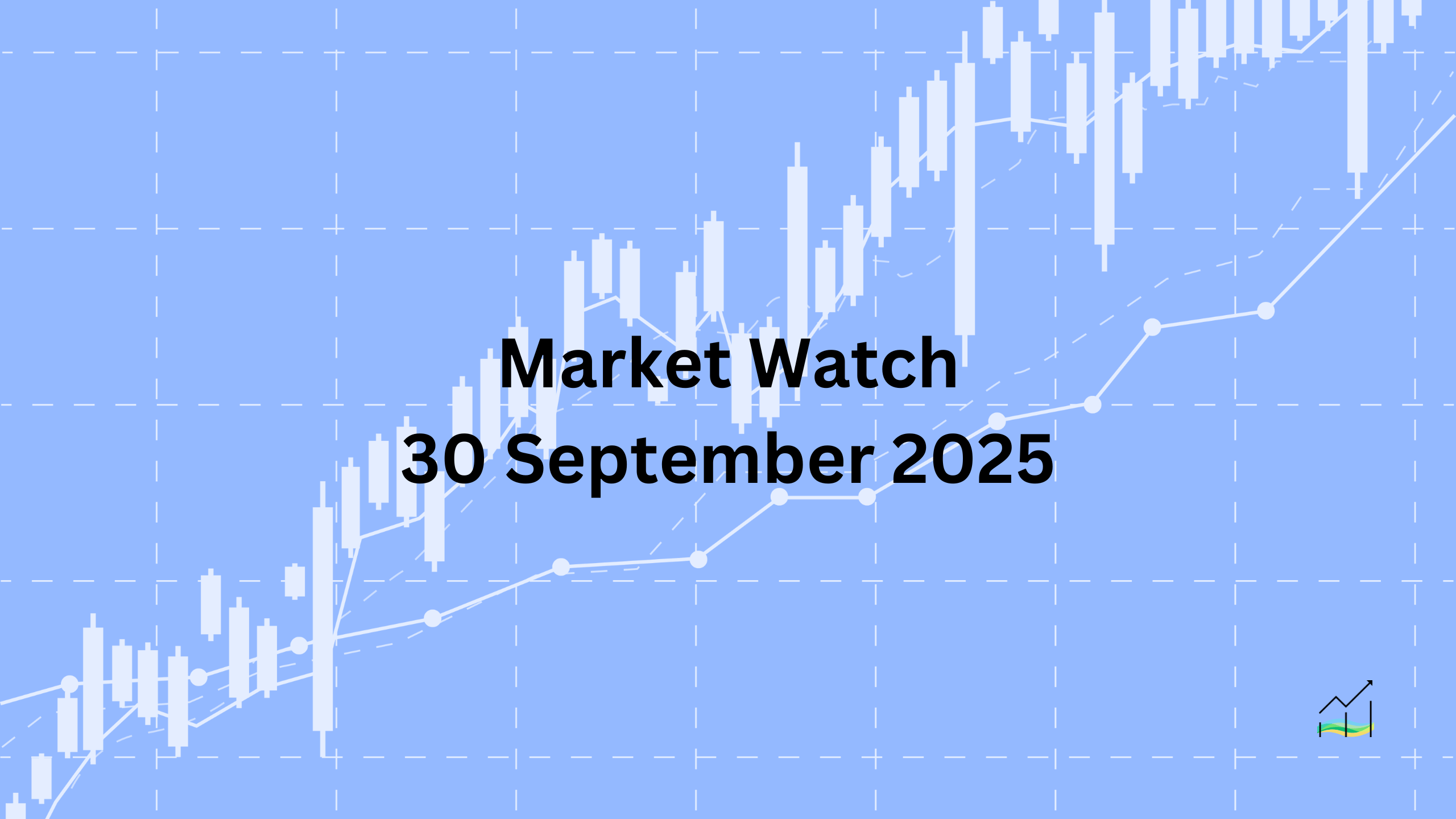30/09/2025 Market Watch

Tariffs, Shutdown Risk & Commodities Weigh on Markets
Key Takeaways:
- US dollar weaker against G10 and emerging market currencies.
- Australian dollar lifted by RBA’s hawkish hold.
- Japanese yen higher despite poor data.
- US federal government shutdown risk rising.
- New US tariffs on Canadian softwood timber, lumber, and wood products.
- Asian equities mostly firm, Europe and US futures slightly lower.
- S&P500 buyback blackout widening through mid-October.
- US 10-year yield slightly below 4.13%.
- Gold reversing after new record high, slipping below $3800.
- WTI crude extends losses, falling to $62.45.
The US dollar is broadly weaker across both major and emerging market currencies. The Australian dollar gained nearly 0.5% after the Reserve Bank of Australia delivered a hawkish hold, pushing it above $0.6700. The Japanese yen also advanced despite disappointing industrial output and retail sales. In the US, the risk of a federal government shutdown is growing, further pressuring sentiment. At the same time, Washington announced new tariffs of 10% on softwood timber and lumber, along with a 25% levy on kitchen cabinets, vanities, and upholstered wood products. Some duties will begin on 14 October, while others take effect on 1 January. Canada, already facing a 35.2% countervailing duty, is most exposed to the impact.
Global equities were mixed, with most Asia Pacific markets advancing, although Australia lagged. Europe’s Stoxx 600 recorded a small loss, and US index futures slipped about 0.15%–0.25%. Corporate buybacks are also limited by a blackout period that now covers a third of S&P500 companies, and by mid-October, this will expand to nearly 85%. Bond markets were steady, with US 10-year Treasury yields easing slightly to below 4.13%, while European yields were narrowly mixed.
Commodities reflected a shift in sentiment. Gold initially set a new record near $3871 before reversing lower to slip under $3800. Oil extended its decline, with November WTI crude down another 1% after a sharp 3.5% fall the previous session. Prices dropped to $62.45, well below last week’s close above $65.70, underscoring a fragile outlook for energy markets.
United States of America
Overview
The Dollar Index extended its recent pullback, falling below 97.80 yesterday and testing the 97.65 area, which coincides with the 20-day moving average. This level also marks the 38.2% retracement of the rally since the Federal Reserve’s September 17 rate cut. The next retracement level, at 50%, lies closer to 97.40, setting the stage for possible further tests.
Attention in the US turns to housing and consumer sentiment data, although the looming risk of a federal government shutdown at midnight may overshadow these releases. House prices remain under pressure, with the FHFA index expected to show a fourth straight monthly decline in July. The S&P CoreLogic Case-Shiller index is also forecast to post its slowest annual increase in two years. Meanwhile, consumer confidence is seen softening, reflecting elevated debt burdens, weaker job growth, and reduced wealth effects from housing.
Despite these headwinds, US consumption continues to display resilience. Revised Q2 GDP showed consumption rising at an annualized 2.5%, higher than the initial 1.6% estimate and well above the 0.6% pace in Q1. Moreover, in the three months through August, personal consumption expenditures increased faster than income growth, underscoring the reliance on credit and savings to maintain spending momentum.
Economic Drivers
- Risk of federal government shutdown creating near-term uncertainty.
- FHFA house prices expected to fall for the fourth month in a row.
- S&P Case-Shiller index likely to record slowest annual gain in two years.
- Consumer confidence weakening due to labor market slowdown, rising debt stress, and weaker wealth creation from housing.
- Consumption remains a key support for growth despite broader headwinds.
Data and Events
- 30 September 2025: JOLTS Job Openings
- 30 September 2025: CB Consumer Confidence
Price Action
- Dollar Index fell to 97.65, aligning with the 20-day moving average.
- 38.2% retracement of post-Fed rally tested, with the next retracement near 97.40.
Key Points:
- Dollar Index testing 20-day moving average support.
- Housing data expected to confirm sustained weakness.
- Consumer confidence likely to soften further.
- Shutdown risk may overshadow incoming reports.
- Consumption remains a surprising pillar of US growth.
Australia
Overview
The Australian dollar recovered from last week’s lows near $0.6520 to trade above $0.6610 today, retracing half of the decline from the mid-September peak slightly above $0.6705. The rebound reflects improved sentiment after recent data and the Reserve Bank of Australia’s latest policy stance.
Australia reported a 0.6% increase in private sector credit for August, underscoring the strength of household and business consumption. This resilience has been a key factor in the RBA’s decision to keep its cash rate target unchanged at 3.60%. RBA Governor Bullock acknowledged progress in policy transmission but warned that inflation is not easing as quickly as expected, highlighting the cautious outlook for monetary policy.
Market expectations have shifted in response. Before today’s meeting, futures pricing reflected nearly a 70% chance of another rate cut in Q4. That probability has now eased to around 50%. The swaps market currently discounts a terminal rate closer to 3.25%, suggesting that while additional cuts remain possible, the path forward is less certain.
Economic Drivers
- Private sector credit growth of 0.6% in August signals strong consumption trends.
- RBA left the cash rate target steady at 3.60%.
- Governor Bullock highlighted concerns that inflation is not slowing as quickly as anticipated.
- Policy outlook remains cautious, balancing inflation risks against economic resilience.
- Futures market has reduced the probability of a Q4 rate cut.
Data and Events
- 30 September 2025: Cash Rate
- 30 September 2025: RBA Rate Statement
- 30 September 2025: RBA Press Conference
Price Action
- Australian dollar recovered from lows near $0.6520 to above $0.6610.
- The move retraced 50% of the decline from the 17 September peak slightly above $0.6705.
Key Points:
- AUD rebounded strongly, retracing half of last week’s decline.
- Private credit growth reinforces consumption strength.
- RBA kept rates unchanged at 3.60%.
- Inflation risks remain elevated.
- Futures pricing now assigns a 50% chance of a Q4 rate cut.
China
Overview
The yuan consolidated after the dollar gave back nearly half of its post-FOMC gains, with the exchange rate stabilising between CNH7.1250 and CNH7.1330. Yesterday’s low came just above CNH7.1185, close to last week’s trough around CNH7.1115, while the retracement target was near CNH7.1165. The People’s Bank of China set the daily reference rate at CNY7.1055, slightly stronger than the previous day’s CNY7.1089, reflecting continued management of currency stability.
China’s extended holiday begins tomorrow, with domestic markets set to remain closed until 9 October. The next significant policy milestone is the plenum session scheduled for 20–23 October, where officials will outline the general direction of the 2026–2030 five-year plan.
Economic data released ahead of the break showed little change in activity. The official September manufacturing PMI edged higher to 49.8 from 49.4, while services slipped to 50.0 from 50.3. The composite index stood at 50.6, marginally higher than August’s 50.5. The RatingDog (formerly Caixin) PMI painted a more positive picture, with its composite rising to 52.5 from 51.9. Markets reacted calmly to the data, with minimal impact on the yuan or equities. Still, appetite for Chinese assets is increasing, as highlighted by recent press reports. The CSI 300 surged 17.9% in Q3, making it one of the best global performers, while mainland companies listed in Hong Kong gained about 10.1%.
Economic Drivers
- September PMIs showed limited change, with manufacturing still below 50 and services at the neutral mark.
- RatingDog composite PMI more optimistic at 52.5.
- Rising foreign interest in Chinese equities.
- CSI 300 posted a 17.9% gain in Q3, while Hong Kong-listed mainland firms rose 10.1%.
- Policy outlook focused on the upcoming October plenum and five-year plan framework.
Data and Events
- 30 September 2025: Manufacturing & Non-Manufacturing PMI
- 30 September 2025: RatingDog Manufacturing & Services PMI
Price Action
- Dollar-yuan stabilised between CNH7.1250 and CNH7.1330.
- Retracement target near CNH7.1165 tested, with lows holding above CNH7.1185.
- Last week’s low around CNH7.1115 remains a key support area.
Key Points:
- Yuan stable as dollar retraces post-FOMC gains.
- PBOC continues to guide reference rate near CNY7.1055.
- September PMIs showed little overall change in activity.
- CSI 300 delivered one of the strongest global Q3 performances.
- Policy focus shifts to the late-October plenum.
Europe
Overview
The euro extended its rebound, reaching $1.1760 today after meeting the 38.2% retracement of losses since the September 17 FOMC meeting. The next resistance is the 50% retracement level, slightly above $1.1780. The single currency’s gains coincide with a renewed focus on inflation and consumption data across key member states.
German state CPI figures point to a modest uptick in inflation, with the national harmonized measure expected to rise 0.1% in September, bringing the year-over-year pace to 2.2%. France’s harmonized CPI accelerated to 1.1% from 0.8% in August, while Italy’s inflation edged up to 1.8% from 1.6%. These developments highlight persistent but mild price pressures within the bloc.
Consumption trends were more mixed. German retail sales unexpectedly fell by 0.2% in August, following a 0.5% drop in July, signalling ongoing weakness in household spending. In contrast, French consumer spending inched up 0.1% after a steep 0.6% decline in July, offering a slightly more constructive picture.
From a policy perspective, the swaps market reflects recognition that the bar for another rate cut is very high. Current pricing suggests only about a 10% chance of a reduction in Q4 2025, and around a 34% chance in the first half of 2026, underscoring the European Central Bank’s cautious stance.
Economic Drivers
- German inflation expected to rise 0.1% month-on-month, bringing annual pace to 2.2%.
- France’s harmonized CPI accelerated to 1.1% year-over-year, up from 0.8%.
- Italy’s CPI edged higher to 1.8% from 1.6%.
- German retail sales fell 0.2% in August after a 0.5% drop in July.
- French consumer spending rose 0.1% after a 0.6% decline in July.
- Swaps market reflects low probability of further ECB rate cuts in the near term.
Data and Events
- 30 September 2025: German Retail Sales
- 30 September 2025: German Prelim CPI
- 30 September 2025: German Unemployment Change
- 30 September 2025: ECB President Lagarde Speaks
Price Action
- Euro advanced to $1.1760 after meeting the 38.2% retracement level of post-FOMC losses.
- Next retracement resistance lies slightly above $1.1780.
Key Points:
- Euro extended rebound, supported by inflation and consumption data.
- Inflation pressures remain moderate but firming across Germany, France, and Italy.
- German retail sales weakness contrasts with marginal improvement in France.
- Market sees very low probability of further ECB cuts near term.
- Technical resistance sits above $1.1780.
Japan
Overview
The yen extended its gains as the dollar slipped to around JPY147.85, retreating from yesterday’s low near JPY148.50 and testing deeper retracement levels of its post-Fed rally. Despite weak domestic data, the currency held firm, reflecting a mix of technical positioning and market expectations for policy adjustments by the Bank of Japan.
Economic indicators painted a bleak picture. Industrial production fell 1.2% in August, matching July’s decline and marking the fourth drop in five months. The two-month contraction is the sharpest since early 2024. Retail sales also disappointed, falling 1.1% in August against expectations of a rise, after dropping 1.6% in July. This marks the worst two-month stretch since the pandemic.
Even so, markets remain focused on the BOJ. The swaps market slightly raised the probability of a policy hike before year-end to just above 80%, suggesting investors still see scope for adjustment despite the soft data. Political developments are also in focus as the ruling Liberal Democratic Party heads toward a leadership contest this weekend. With no candidate expected to win outright in the first round, a run-off appears likely between Koizumi, presenting himself as a reformist, and Takaichi, a conservative contender who would become Japan’s first female prime minister if successful.
Economic Drivers
- Industrial production contracted 1.2% in both July and August, marking four declines in five months.
- Retail sales fell 1.1% in August after a 1.6% drop in July, the weakest two-month period since the pandemic.
- Swaps market raised the probability of a BOJ rate hike before year-end to slightly above 80%.
- Political uncertainty surrounding the LDP leadership race, with a likely run-off between Koizumi and Takaichi.
Data and Events
- 30 September 2025: Prelim Industrial Production
- 30 September 2025: Retail Sales
- 30 September 2025: Housing Starts
Price Action
- Dollar-yen extended its retreat to JPY147.85.
- 50% retracement of post-Fed rally lies just below JPY147.75, with 61.8% retracement near JPY147.20.
Key Points:
- Yen strengthened despite weak economic data.
- Industrial production and retail sales posted consecutive declines.
- BOJ hike probability increased slightly above 80%.
- LDP leadership race adds political uncertainty.
- Dollar-yen technical focus on JPY147.75 and JPY147.20 retracement levels.
United Kingdom
Overview
Sterling extended gains yesterday, briefly rising above $1.3455 to test the 61.8% retracement of last week’s losses. However, it stopped short of last Thursday’s high near $1.3465 and the broader retracement target from the September 17 FOMC meeting, around $1.3480. Today’s session saw sterling peak just shy of yesterday’s level, while support is forming around $1.3400–20.
On the economic front, the UK confirmed Q2 GDP growth of 0.3% quarter-over-quarter. Government spending provided much of the support, helping to offset stagnant household consumption and a wider current account deficit. Business investment, while still negative, contracted by just 1.1% compared with the earlier estimate of a 4% decline. Looking ahead, growth is forecast at 0.2% in both Q3 and Q4, underscoring the fragile nature of the recovery.
In terms of policy, market expectations for the Bank of England remain anchored. The swaps market sees rates on hold until the first quarter of 2026, when the probability of a cut rises to nearly 74%. This signals that monetary easing is not expected in the near term, with the focus on stability until clearer evidence of economic weakness emerges.
Economic Drivers
- Q2 GDP confirmed at 0.3% quarter-over-quarter.
- Growth supported by government spending, while consumption stagnated.
- Current account deficit widened further.
- Business investment contracted 1.1%, a smaller drop than initially reported.
- GDP growth expected to remain modest at 0.2% in Q3 and Q4.
- Swaps market sees BOE holding rates until Q1 2026, with a 74% chance of a cut at that time.
Data and Events
- 30 September 2025: Current Account
- 30 September 2025: Final GDP
- 30 September 2025: MPC Members Speak
Price Action
- Sterling peaked just above $1.3455, testing 61.8% retracement of last week’s losses.
- Held below $1.3465 resistance and $1.3480 retracement from post-FOMC decline.
- Support seen at $1.3400–20.
Key Points:
- Sterling capped below key resistance near $1.3480.
- UK Q2 GDP confirmed at 0.3%, supported by government spending.
- Consumption stagnation and wider current account deficit weigh on outlook.
- Business investment weaker, but less severe than first estimated.
- BOE expected to hold until Q1 2026, with markets pricing in a cut then.
© 2025 SKONE Enterprise (003319453-V). All rights reserved.
The content on this site is for informational purposes only and does not constitute financial advice.


